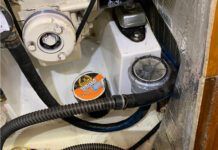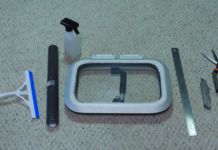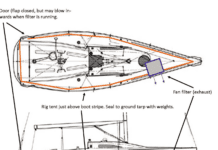Excerpted from Don Caseys Inspecting the Aging Sailboat
SIGNS OF STRESS OR TRAUMA
Fiberglass generally reveals stress problems with cracks in the gelcoat. The cracks can be very fine and hard to see; get close to the hull and lay your finger against the spot you are examining to ensure that your eyes focus properly. A dye penetrant such as Spot Check (available from auto-parts suppliers) can highlight hairline cracks.
Dont confuse stress cracks with surface crazing; crazing is a random pattern of cracks – something like the tapped shell of a boiled egg just before you peel it – that occurs over large areas of the boat. Stress cracks are localized and generally have an identifiable pattern to the discerning eye.
IMPACT DAMAGE
A collision serious enough to damage the hull usually leaves a scar, but sometimes the only visible record of the event is a pattern of concentric cracks in the gelcoat. Impact with a sharp object, like the corner of a dock, leaves a bulls-eye pattern. Impact with a flat object, like a piling or a seawall, tends to put the stressed area in parenthesis. Tap the hull with a plastic mallet or a screwdriver handle in the area of the impact and listen for any dull-sounding areas, which indicate delamination. Examine the hull inside for signs that the impact fractured the glass.
PANTING
Panting occurs when poorly supported sections of the hull flex as the boat drives through the waves. This problem is also called oilcanning, taking its name from the domed bottom you push in and let spring back on a small oilcan. Panting usually occurs in relatively flat areas of the hull near the bow, but it may also occur in flat bilge areas and unreinforced quarters. The classic sign is a series of near-parallel cracks, sometimes crescent shaped, in the gelcoat. If you can move any portion of the hull by pushing on it, the hull lacks adequate stiffness. Left unchecked, panting can result in fatigue damage to the laminate and eventually a hinge crack all the way through the hull.
For more advice on ways to identify signs of stress or trauma in a sailboat, purchase Don Caseys book, Inspecting the Aging Sailboat. To buy a copy of Inspecting the Aging Sailboat from Practical Sailor, click here.






































